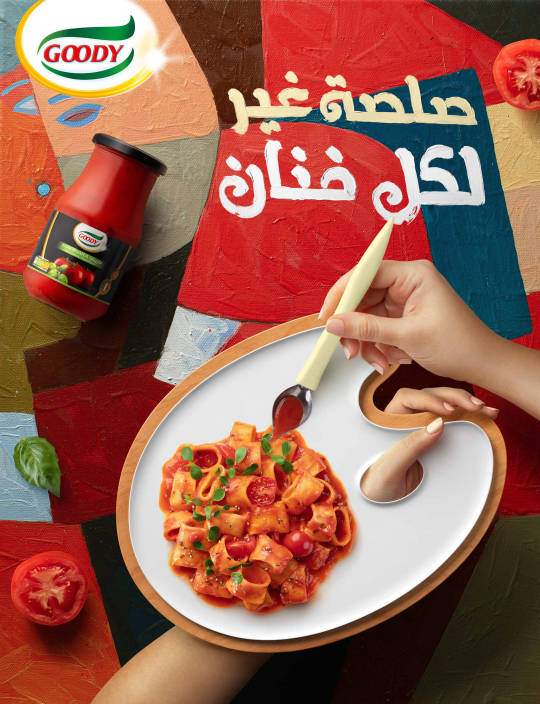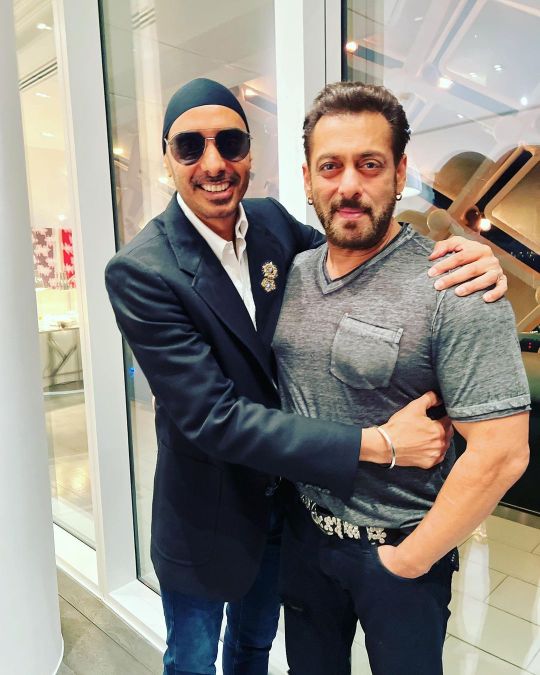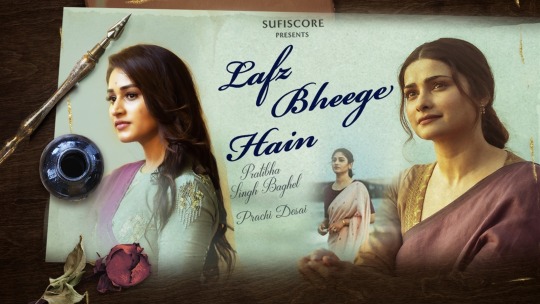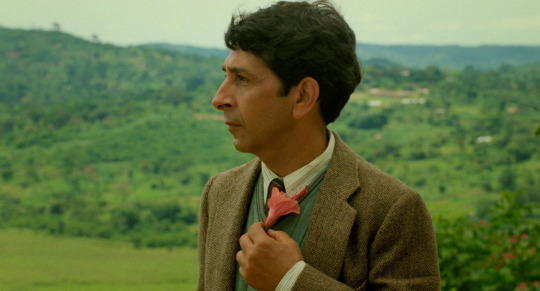#punjabi film producers
Text
#Amrinder Gill#singer#actor#film producer#film director#Indian film actor#Actors in Punjabi cinema#Punjabi singers#punjabi film producers#punjabi film directors#Punjabi cinema
1 note
·
View note
Text
"मुसावाला को गोली मार दी गई, इसी तरह तुम भी मारे जाओगे," फिल्म प्रोड्यूसर संदीप सिंह को मिली धमकी
“मुसावाला को गोली मार दी गई, इसी तरह तुम भी मारे जाओगे,” फिल्म प्रोड्यूसर संदीप सिंह को मिली धमकी
Image Source : TWITTER
Film producer Sandeep Singh
Sandeep Singh: मशहूर पंजाबी सिंगर सिद्धू मुसावाला की हत्या के बाद फिल्म इंडस्ट्री में लोगों को धमकाने का दौर सा शुरू हो गया है। अब फिल्म प्रोड्यूसर संदीप सिंह को जान से मारने की धमकी मिली है। प्रोड्यूसर संदीप सिंह की शिकायत पर मुंबई पुलिस ने मामला दर्ज कर लिया है। मुंबई के अंबोली पुलिस स्टेशन में धमकी को लेकर अज्ञात शख्स के खिलाफ पुलिस ने मामला…

View On WordPress
#Case filed#death threat#facebook#Film producer#Film producer Sandeep Singh#Film Producer Sandeep Singh Local Police Station#Maharashtra#mumbai#Mumbai Police#National Hindi News#prober underway#punjabi singer Sidhu Moose Wala#sandeep singh#Sandeep Singh received a death threat on Facebook#Sandeep Singh Received Death Threat#siddhu moosewala#केस दर्ज#जांच#जान#धमकी#पंजाबी सिंगर#फिल्म निर्माता#फेसब
1 note
·
View note
Text
Abhijeet - Ole Ole
1994
Abhijeet Bhattacharya is an Indian playback singer who primarily sings in Hindi Film Industry. Apart from Hindi, he has also sung in other languages including Bengali, Marathi, Nepali, Tamil, Bhojpuri, Punjabi, Odia and his native language Bengali both in West Bengal and Bangladesh. Abhijeet has sung 6034 songs in more than 1000 films. He was nominated for Forbes Popular 100 Indian Celebrity in the year 2014.
Yeh Dillagi (This Cheerfulness) is a 1994 Indian Hindi-language romantic comedy-drama film directed by Naresh Malhotra and produced by Yash Chopra. Based on the 1954 American film Sabrina, its story revolves on two brothers (Akshay Kumar and Saif Ali Khan) who fall in love with their family driver's daughter, Sapna (Kajol), a successful model. The film released on 6 May 1994, and emerged as a commercial success, grossing ₹10.8 crore against its ₹1.6 crore budget.
At the 40th Filmfare Awards, Yeh Dillagi received 4 nominations – Best Actor (Kumar), Best Actress (Kajol), Best Music Director (Dilip Sen, Sameer Sen) and Best Male Playback Singer (Abhijeet for the song "Ole Ole"). The film's soundtrack album contains seven songs composed by Dilip Sen-Sameer Sen. It became one of the top three best-selling Bollywood soundtrack albums of 1994, with 4.5 million sales. The song "Ole Ole", sung by Abhijeet was a hit at the music charts. "Ole Ole" was remixed for the 2020 film Jawaani Jaaneman.
"Ole Ole" received a total of 68,2% yes votes!
youtube
399 notes
·
View notes
Text
Creative Review 06

Here's a quick look back at the Creative happenings and hot topics of the week.
#CreativeReview is a one-stop cheat sheet of everything that happened this week in the digital media world - it's a weekly summary for creatives, written by creatives and it’s a free/quick read with no registration and we won't add you to some annoying list that's impossible to unsubscribe to promise.
Trailer Beat
youtube
Apple TV+; June 28
Idris Elba, Archie Punjabi
Told in real-time, Hijack is a tense thriller that follows the journey of a hijacked plane as it makes its way to London over a seven-hour flight, and as authorities on the ground scramble for answers.
youtube
Sony Pictures, In theaters June 23
Jennifer Lawrence, Andrew Feldman, Matthew Broderick
Maddie (Lawrence) thinks she’s found the answer to her financial troubles when she discovers an intriguing job listing: wealthy helicopter parents looking for someone to "date" their introverted 19-year-old son, Percy, and bring him out of his shell before he leaves for college. But awkward Percy proves to be more of a challenge than she expected, and time is running out. She has one summer to make him a man or lose it all.
youtube
Warner Bros. Pictures, In theaters December 25
Taraji P. Henson, Danielle Brooks, Colman Domingo, Corey Hawkins, Halle Bailey, H.E.R., Fantasia Barrino
A remake of the classic film showcasing the extraordinary sisterhood of three women who share one unbreakable bond in “The Color Purple.” This new take on the beloved classic is directed by Blitz Bazawule (“Black Is King,” “The Burial of Kojo”) and produced by Oprah Winfrey, Steven Spielberg, Scott Sanders, and Quincy Jones.
Social Media Tips & Resources
Brandy Johnson breaks down some helpful social media tips this week:
How to Find your target audience and enhance your social media strategy on Instagram










Understanding Instagram's Algorithm for Beginners

Instagram's algorithm is pivotal in determining what content users see on their feeds. It constantly evolves to provide a personalized and engaging experience for individuals.
👉Here's an analysis of Instagram's algorithm and its key components:
✅Engagement: The algorithm prioritizes content that generates high levels of engagement, such as likes, comments, saves, and shares.
✅Relevance: It analyzes post engagement, search history, and user interactions to understand preferences and deliver personalized content.
✅Relationships: The algorithm prioritizes content from accounts that a user frequently engages with, including posts from friends, family, and accounts they interact with regularly.
✅Recency: Instagram aims to provide users with the most recent posts to keep them up to date with the latest content.
✅Usage: The algorithm considers how often a user opens the app, the duration of their sessions, and the types of content they engage with.
✅Following: The algorithm considers the accounts users follow and their content. If a user follows accounts with similar content themes, Instagram is more likely to show them related posts.
✅Explore Page: The Explore page, powered by the algorithm, offers personalized recommendations to users based on their interests and interactions. It showcases content from accounts that users may not follow but align with their preferences.
Here are a few key takeaways:
🔥Focus on creating engaging content that sparks conversations and encourages interactions from your audience.
🔥Nurture relationships with your followers by engaging with their content and responding to comments.
🔥Post consistently to maintain a presence and increase the chances of your content being seen.
🔥Use relevant hashtags to expand your reach and connect with users interested in your niche.
🔥Experiment with different content formats, such as videos, Stories, and carousels, to keep your audience engaged.
🔥Monitor your analytics to gain insights into what types of content perform best and adjust your strategy accordingly.
Creative Showcase
Abu Dhabi: One Summer Isn't Enough
youtube
As the Emirate states recover from a COVID-influenced downturn in tourism, it’s intriguing to see how Abu Dhabi’s Department of Culture and Tourism – Abu Dhabi (DCT Abu Dhabi) is positioning the UAE’s capital city.
DCT is achieving this positioning through its “One Summer Isn’t Enough” campaign. The seasonal campaign has launched across 12 markets under the Experience Abu Dhabi destination brand, with a series of vibrant and light-hearted spots that showcase Abu Dhabi as the best place to experience summer highlighting a diverse range of indoor experiences, unmissable events, and unbeatable summer offers, and the emirate’s wide range of indoor attractions will ensure that visitors stay cool and comfortable.
Liquid Death: Recycled Plastic Surgery Center
youtube
Ozempic Queen or Buccal Fat Removal? Regardless of how you identify, Liquid Death is clearly playing into the beauty trends of the moment by focusing their latest campaign on plastic recycling, or rather, Plastic Surgery Recycling in a new spot starring Whitney Cummings.
Most recycling facilities send our plastic to landfills or oceans because it’s not actually profitable to recycle. So what should we do with all of this plastic trash? Introducing the Liquid Death Recycled Plastic Surgery Center. A revolutionary new approach to useless plastic garbage.
Learn more at: http://liquiddeath.com/plasticsurgery
McDonald’s “Sí Pica o No Pica”
tumblr_video
McDonald’s is asking Gen Z fans “Sí Pica o No Pica” with its newest Spicy Menu campaign helmed by Colombian American director Victoria Rivera and produced by SLMBR PRTY in collaboration with Alma.
Rivera’s approach captured the candid opinions and reactions of a diverse cast of Gen Z friends as they try out the McSpicy sandwiches and Chicken McNuggets® in various environments.
The free-flowing conversations among the friends provide honest and unscripted reactions to the level of spiciness, with ad-libs in Spanglish polling their friends for their opinions on the spice level.
Goody: A different sauce for every artist صلصة غير لكل فنان
tumblr_video
In food brand Goody’s latest campaign, pasta is their canvas, in which consumers can express themselves to come out with a masterpiece/painting.
Goody will accompany passionate foodies with a rich range of pasta sauces to help them shine, and add a sprinkle to their Artistic masterpieces, each carrying an artistic story of their own.



Don’t Eat the Homies: Nature is a runway
Birkman Agency took the concept of an ordinary runway and flipped it on its head to promote the athletic brand, Don’t Eat the Homies, by embracing the wild and untamed beauty of the great outdoors. Birkman & team hit the trails armed with a treadmill, models ready to strut their stuff, and a whole lot of 80s spirit.



tumblr_video
Heineken Champions Cup Final Arrivals Billboard
Heineken helped a Leinster superfan send a message to Stade Rochelais ahead of the Heineken Champions Cup Final in Dublin.
Heineken believes the bigger the rivalry, the better the rugby. That’s never been truer than this weekend as Leinster Rugby took on reigning champions Stade Rochelais in the final of the Heineken® Champions Cup in the Aviva Stadium, Dublin.
After losing to La Rochelle in the final last year, Leinster will be doing everything in their power to get the win and secure their fifth Heineken Cup. And so will their fans, it seems.
Heineken Ireland made superfan Colin Fennessy’s dream come true by helping him paint his cheeky message to La Rochelle Head Coach Ronan O’Gara (or ROG as he’s known locally) at scale in Ballyboughal Airfield, located right next to Dublin airport.
“Never too late to turn the plane around, ROG!” is big enough to be read from 30,000 ft and will be visible to all planes flying into Dublin on the La Rochelle flight path this weekend.
The message from Colin was picked up as part of Heineken’s Love Rivalry campaign where fans were invited to send cheeky voice messages to the opposing team on match day.
The mammoth message measures 15M X 10M and was created with *eco-friendly paint. The message is designed to be the first thing rugby fans see on their approach to Dublin City.
LeBron James x Taco Bell: Taco Tuesday

The trademark on the phrase “Taco Tuesday” is really burning Taco Bell and LeBron James’ burritos. Now, the two have joined forces to combat the interdict on the use of the moniker in marketing material.
In a new ad, LeBron James laments being bleeped in a candid vertical video where he shouts, “It’s Taco Tuesday!” as he continues to be bleeped throughout the ad—but he’s grateful Taco Bell is doing something about it.
youtube
15 notes
·
View notes
Text
Indian Rap Heroes DIVINE & Karan Aujla are Anime Action Stars in "HISAAB" Video

DIVINE and Karan Aujla are heroes in the fast-growing Indian hip-hop scene. The groundbreaking duo puts their power into action in "HISAAB," a new anime-influenced video from their new collaborative album Street Dreams. "HISAAB" mixes traditional Indian instrumentation with a hip-hop pulse, as DIVINE and Karan Aujla trade bars–DIVINE rapping in Hindi, Karan Aujla rapping and singing in Punjabi–to examine the price of fame and the responsibilities incurred. Directed by Debjyoti Saha for Goppo Animation, the video for "HISAAB" is a visually-striking, action-packed, Anime-influenced short film. DIVINE and Karan attempt to escape from a surreal asylum, full of autonomous soldiers and giant cobra snakes, in an effort to save their freedom and sanity in the harsh world. The video surpassed 1 million views in just 12 hours and is currently in the Top 10 of YouTube's Trending Chart.
youtube
Last week, DIVINE and Karan Aujla shared Street Dreams, a 7-track effort that demonstrates why they are among the most exciting artists in the Indian scene. Out now via Mass Appeal India, Street Dreams had an extremely successful debut, reaching #1 on Apple Music within 24 hours of release, and taking over the number one spot on Apple Music's Album Charts in 40 countries, including India, Canada, New Zealand, and Australia. All seven songs from Street Dreams charted on Spotify's Daily Top Songs in India, and are currently trending on Instagram.
is a relentless effort, bringing bilingual bars that express sentiments that need no translation. The album features production from Western heavy-hitters like Boi-1da, WondaGurl, Harry Fraud, Leven Kali, and Trox, who deliver premium productions for Karan and DIVINE to annihilate, along with hip-hop producers from the Indian scene. "Hisaab" finds the two artists counting their myriad accomplishments in 6/8 time, taunting any comer who can't match their quick maths, while "Top Class / Overseas" lays playful strings atop sliding 808s as DIVINE and Karan proclaim their valedictory status. "Yaad," meanwhile displays a softer side of the duo, as they trade off vocals with Indian-Canadian singer Jonita Gandhi.
Also among the highlights is "100 Million," the tape's lead single and music video, which made waves across the globe. Defined by nostalgic hip-hop production reminiscent of Y2K-era Dr. Dre, in this case produced by American producer Trox (50 Cent, Cordae), “100 Million” is an anthem for those with grand dreams, the two icons reflecting on the enduring habits that propelled them to greatness. The song arrived in mid-January, with a video filmed in Dubai and directed by Karan Aujla’s long-time collaborators Rupan Bal, Dilpreetvfx and Anmol Raina. The song and video immediately became a huge success–the song reached the #1 spot of the YouTube Trending Charts in India, and reached the Top 10 in countries including Canada (#2), New Zealand (#4), UK (#6), Australia (#8) and the UAE (#8). Overall, the song racked up over 21 million YouTube views to date, as well as over 6 million Spotify streams.
Karan Aujla and DIVINE have individually topped several charts across India with their albums and songs such as Karan's “Softly”, “White Brown Black”, “Mexico,” and “Players,” and DIVINE's “Mirchi”, “359 AM”, “Baazigar” (80 million YouTube views), and “Kaam 25” (65 million YouTube views). Their upcoming collaborative project is the first of its kind in the Indian music space and is poised to be a landmark moment in Indian music history.
With Street Dreams out now, the dynamic duo prepares to make their presence felt on American shores. Stay tuned for more videos and announcements from DIVINE and Karan Aujla in the near future.
#india rap#indian hip hop#indian rap#desi hip hop#desi music#desi#music#soundcloud#youtube#artist#spotify#musician#rapper#culture#rap#art#karan aujla#divine#Youtube#Spotify
2 notes
·
View notes
Text
★ Sukhbir reveals how he, Salman Khan came up with 'Billi Billi Akh'!
Mar 2, 2023
Punjabi singer Sukhbir, who is known as the Prince of Bhangra and boast of chartbusters like 'Ishq Tera Tadpave', 'Balle Balle', is back with another track 'Billi Billi Akh' and this time, it's for a Salman Khan film - 'Kisi Ka Bhai Kisi Ki Jaan'.
The song, video of which is set to release on Thursday, has an interesting story. The singer revealed that Salman came up with the idea for a wedding song and shared the same with him while the two were in Abu Dhabi.
'Billi Billi Akh' is an upbeat, peppy song, composed by Vicky Sandhu who's also written Punjabi lyrics, with the perfect blend of modern flair and Punjabi beats, features Sukhbir himself along with the entire cast of the movie, Salman Khan, Pooja Hegde, Shehnaaz Gill and Palak Tiwari.
Talking about how the song came into being, Sukhbir said, "I met Salman Khan in Abu Dhabi where he had requested a wedding/celebration song for his upcoming movie and that's when I sent him a couple of options. He loved all of them but especially fell in love with 'Billi Billi Akh' which was a Punjabi song and lyrics and that's how we started working on this Hindi version which was written by lyricist Kumaar and the music has been produced by DJ Dips and Supernova."
Sukhbir has been in the industry for over two decades now and commands a colossal fan following, his 'Ishq Tera Tadpave' song still rules the dance floors during wedding celebrations.
Talking about his experience during the shoot with Salman Khan, the singer added, "My experience has been nothing short of simply amazing. I did not expect Salman Khan to be so hands-on when it came to every detail, he would call me to discuss lyrics and the musical bits, ask me to edit certain parts so that they make sense to the visuals of the song, and the best part was shooting of the video which was done in Mumbai".
"He made sure everyone was looked after and I particularly enjoyed meal times with him as it gave us an opportunity to have one on one sessions to discuss the movie amidst many jokes", he added

9 notes
·
View notes
Text
Watch Legendary love story ghazal song Lafz Bheege Hain
Sufiscore celebrates an epic Indian love story, an ‘amour eternal’ on the new release Lafz Bheege Hain (“Words Drenched in Tears”). The album features lyrics from the esteemed contemporary poet, Ajay Sahaab with beautifully sung melodies from lead vocalist Pratibha Singh Baghel. The songs on Lafz Bheege Hain follow the story of unrequited love involving two eminent writers from India’s social justice-oriented Progressive Writers Movement, Punjabi Amrita Pritam (1919-2005) and Sahir Ludhianvi (1921-1980). Pritam, a novelist, essayist and poet, discusses her unrequited love for Ludhianvi, the poet and film lyricist, in her 1977 autobiography ‘Rasidi Ticket’ (a.k.a. The Revenue Stamp).
youtube
“There is a saying in India that if you want to express love, you resort to Urdu,” declares poet Ajay Sahaab. Sahaab drew on his lifelong passion for Urdu to evoke a familiar “tear-drenched” story that has almost acquired the status of a legend or folk tale.
Lafz Bheege Hain consists of five songs, modern in sound and conception, yet following the traditional form of the ghazal: a poem with rhyming couplets in prescribed patterns, usually sung in Urdu, the “love language” par excellence of the subcontinent. This great love story between Amrita Pritam and Sahir Ludhianvi has been depicted in literature and film — and in that spirit, director Parasher Baruah has created a sequence of videos to accompany all of the ghazals of Lafz Bheege Hain, featuring famed actors Prachi Desai and Som Chattopadhyay in the leading roles.

The emotions summoned by this love story”, says singer Pratibha Singh Baghel, “are held in common throughout the world. Those feelings of love and separation and sadness are the same everywhere. The poetry and compositions of Lafz Bheege Hain are for everybody who can relate to this.” Desai strikes a similarly universal chord: “I don’t know where we all find our strength, but after some of the biggest losses we ever have, we somehow make it through. It’s a hopeful message for anyone watching these videos or listening to this music.”
To capture these nuanced sentiments, composer Rajesh Singh drew upon what are known in Hindustani classical music as “evening ragas,” scales and tonalities associated with the time of day, he says, “when the solitude is very intense, and the melancholy and sadness comes throbbing upon us.” From these evening ragas come the beautiful melodies of Singh’s imagination. The rhythms are hypnotic; the lush, flowing chord progressions are informed by Western harmony but applied in such a way as to underline the ragas’ traditional character. “As a composer I had to find a correct mood and balanced sound to express the melancholy and divinity of pain portrayed in these ghazals,” adds Singh. “I observed that the pain of separation expressed by the poet here has no bitterness, and there is a subtle acceptance of separation due to social circumstances. Hence the notes had to be carefully woven not to sound depressing or negative.
Arranger and producer Paras Nath played a crucial role in bringing Singh’s compositions to life with rich and varied instrumentation and sonic character. “Because of Paras’ contribution,” says Pratibha Singh Baghel, “I was able to deliver the way that I did. So a lot of credit for this project goes to him.” Building upon Singh’s vision for each composition, Paras Nath reports trying “to enhance the feel of the ghazal. In every song I used something different.”
Cello, acoustic guitars, violin, viola and keyboards enter into the mix of Lafz Bheege Hain as well as Hindustani bansuri flute, the fretless sarod and the bowed sarangi. “Each instrument has its own character,” Paras Nath observes. “I didn’t want a loud arrangement,and I was careful not to overshadow the singing and the lyrics.”
Along with her extensive accomplishments in Indian musical theater and Bollywood playback singing, Pratibha Singh Baghel has devoted herself to the art of classical Hindustani music in a forward-looking, internationally minded modern vein. Lafz Bheege Hain is a vital part of that effort. To the poet Sahaab, the goal is to “revive the classicity of the ghazal,” bringing the traditional form into vibrant contact with Western elements before a worldwide audience. “In a very humble way but with energy,” says Sahaab, “we are trying to convey emotions so that modern generations can feel the intensity of words, music, poetry, composition and instruments.
“For me the songs on Lafz Bheege Hain are part of a single work of cinema,” says Parasher. “I wanted to narrate certain aspects of the story and portray universal themes of love and longing. I approached the cinematography with an idea of recreating the 1950s and ’60s, a personal homage to the heyday of Indian cinema when romance was celebrated in all its emotions, blending poetry with visual storytelling. Choosing to shoot in colonial Pondicherry and Mumbai, our choice of locations, production design and styling helped in this a lot.” For Prachi Desai, the alluring beauty of the audio tracks generated all the inspiration and excitement she needed: “When I first listened to Lafz Bheege Hain, time stopped,” she recalls. “I knew I had to be a part of this. I’m glad that this was my first ghazal ever.”
Lafz Bheege Hain
3 notes
·
View notes
Text
Former Disney India head and producer of Sony LIV hit “Rocket Boys,” Siddharth Roy Kapur has hailed the reinvigorated Indian box office and robust streaming space. Nevertheless, he sees challenges ahead...
The Indian box office caught fire in the June-July period with hits including the Hindi-language “Satyaprem Ki Katha,” Marathi-language “Baipan Bhaari Deva,” Punjabi-language “Carry On Jatta 3,” Telugu-language “Bro” and “Baby” and Tamil-language “Maaveeran” keeping the turnstiles ticking over.
Hollywood enjoys a 10% market share in India and, after the success of “Fast X” in May, the twin releases of “Barbie” and “Oppenheimer” in July saw audiences surging into cinemas. Multihyphenate Karan Johar’s star-studded “Rocky Aur Rani Kii Prem Kahaani” hit cinemas in the wake of the “Barbenheimer” juggernaut and is on its way to becoming a major hit...
“‘Rocky Aur Rani’ is wonderful for the industry, it’s a mainstream commercial Karan Johar film that’s going from strength-to-strength day-after-day in its collections. ‘Oppenheimer’ is another very interesting result because for a three-hour drama — a Christopher Nolan very layered and complex film, not a dubbed version — it’s mainly the English business that’s really driving the film, not really any known stars in the Indian market, like Tom Cruise or Brad Pitt, and a narrative and a subject itself that can be pretty dry. For that to be working as spectacularly as it is at the Indian box office gives a lot of hope for genres like drama, which a lot of people had written off and said, ‘This has become a streaming genre.’ That actually gives a lot of hope that if you do drama in a way which is cinematic and compelling, people will still come,” Roy Kapur says.
Roy Kapur says that while “Barbie” and “Rocky Aur Rani” are “cinematic experiences and spectacles,” films like “Zara Hatke Zara Bachke” and “Satyaprem Ki Katha” have worked in the smaller cities and metros respectively. “And then you’ve got an ‘Oppenheimer,’ which breaks all the rules and is non-sequel, non-IP, that holy grail of pure cinema,” he says.
India is the only major market where “Oppenheimer” has outgrossed “Barbie” 3:1, with 3:30 a.m. screenings being sold out. “We should take a lot of pride in that — ‘Oppenheimer’ has reversed the ‘Barbenheimer’ trend of ‘Barbie’ being on top,” Roy Kapur says. “All the signs are very positive and I am very optimistic about the next few months as well.”...'
#Barbie#Oppenheimer#Rocky Aur Rani#Zara Hatke Zara Bachke#Satyaprem Ki Katha#Siddharth Roy Kapur#Fast X
2 notes
·
View notes
Text
kapil sharma PS-1 extras
(bear in mind, not fully fluent in hindi here!)
youtube
[0:17]
kapil: a big round of applause for our guests!
my question is to all of you. [to the audience] you might already know, they're making a big-budget film.
[to the actors] so when you found out that the budget is so big, did you tell your actual price to the producers or did you add some ten thousand to it, like it's fine, it's already so expensive, let us ask for a little more as well? or did the producers say, we're making PS-1 now, there will be PS-2,3,4,5 so please lower your rate a little?
i heard from [somebody] that those who weren't lowering their rates would be dying in the war scenes in the film. is it true, sir?
vikram: yeah, yeah, definitely.
-
vikram: you can say amitabh sir's dialogue; "i can talk english, i can walk english, i can speak english" (dialogue from the movie 'namak halaal' in 1982; i think they cut to when they're talking about kapil's english)
archana: [kapil] can flirt english! anytime!
kapil: i can what?
archana: you can flirt english. hindi, punjabi, sindhi, marathi, all!
kapil: thanks, thanks, pleasure. okay, you know that this film is based on kalki's novel and it's a 2600 page novel. so did you read the script or read the novel? and if you read the novel, how many days did it take you to read such a long novel?
sobhita: there are five books, each of them this thick.
kapil: you read the whole thing?
sobhita: yes.
vikram: half payment is for reading the novel.
kapil: for [a book] that long, actually yeah!
vikram: and exercise also with that.
kapil: you read the book in seven days.
-
archana: about trisha, do you know this?
trisha: so actually, my first film in telugu, "nee manasu naku telusu" ('i know your heart/mind'), in that film, archana ji was my mother; and she's very hot, and the role was of a hot mom, so…
kapil: until now, there's no one in the industry who has said they haven't worked with archana ji.
trisha: that's true.
kapil: some people were saying that when the british left in 1947, she was standing at the main gate to see them off.
-
[2:24] to [8:11] is the game, as per this post.
-
from [8:12]
kapil: karthi sir posted this photo.
[reads comments]
"it looks like they're pulling the TC (ticket collector for trains) aside to confirm their ticket on the waiting list"
(reply to above) "hey, that's not the TC, that's the director; they're confirming their roles"
please show more.
"karthi sir's smile is telling that his next scene is a romantic one"
"director be like: you're doing all the romance scenes; what share are we getting? take out a couple thousand [rupees]"
please show more.
[trisha's post]
"it seems like the producer is coming to discuss the budget, so she's taken out all the awards and put them there"
[another trisha post]
"by standing on that cake, you could even fix the ceiling fan"
[another trisha post]
"madam, a question: in horse riding, does the horse burn calories or does the person sitting on the horse burn calories?"
"you give your helmet to the horse and put on the horse's ears on yourself, then your height will be as much as the horse; free advice, there's no fees"
[jayam's post]
jayam sir posted a photo; back to doing what i do best. please show the comments below.
"i can also drive a tractor well; you are a good actor also"
"seeing the lion behind you, i remembered i have to (not sure what the word means exactly but i'm assuming it's some type of consumption) drink two bottles of glucose"
"sir, i have to shift my house, will you give your tractor? dm me the charges"
"he's also waiting for the ride; it won't move forward until the trolley is full (of people)"
please show more.
[sobhita's post]
oh this is anurag sir? (a filmmaker) show the comments.
sobhita: i'm feeling scared.
kapil: "boys are like this only. even if their own leg is broken, they are always ready to give a support to a girl" (referring to the fact that in the picture, anurag's leg is in a cast, and he's letting sobhita lean against him)
"sobhita ji, from looking at your shoes, it seems like you came straight from school"
(reply to above) "in that sense, then anurag ji looks like he just came after getting beat up"
please show more.
karthi: it's scary when it scrolls, huh?
kapil: "it looks like whoever they trusted and came to france, that person isn't picking up their phone" (because it looks like they're stranded somewhere)
"i have also sat like this is a foreign country; people started giving me money"
-
6 notes
·
View notes
Photo

Reeta Loi, London(UK)
Activist, Musician, Writer & Founder of Gaysians
She was featured in the Forbes 100 Women Founders list, has won British LGBT+ Award, and played an instrumental role in lobbying for the repeal of Section 377 in India. “I grew up witnessing oppression of women in my family and chose to follow the path of self-discovery when given an ultimatum for coming out as a lesbian to my family,” she recalls. It was excruciating for Reeta to lose her family, grow apart from her Punjabi culture and be alienated at the age of 18. “I was on a quest to seek out people like me, be an anonymous voice in the media for years before deciding to use my name and set up Gaysians,” she tells us.
The music industry is male-dominated and so is the queer scene—with 98 per cent of music producers and 80 per cent of music artists being men, Reeta informs us. “Our suppression is a product of patriarchy and frankly, it’s so pervasive that we can’t even see it. I continue to make art from love and compassion to reverse this,” she says.
Gaysians, a non-profit organisation spearheading the global visibility and representation of the South Asian diaspora and the LGBTQIA+ spectrum, is almost 5 years old, with a team of seven volunteers and a network of 25 organisations in the UK and North America.
Being a Londoner, Reeta is heavily influenced by the melting pot of sounds of the diaspora—from Reggae, dance music like Garage, Breakbeat, Jungle, Hip Hop, to Bollywood soundtracks from films like Bobby and Mughal-e-Azam and Lata Mangeshkar. Reeta tells us, “I queered my collection of Bollywood records—the only memories I have of my dad apart from a few of his old kurtas. I started using samples from Hindi love songs and distorted my vocals to turn them into same-sex love songs or responses that messed with people’s gender perceptions. I released some of this work in an EP in 2018 called Ek under LOIAL, my artist name at that time. ”
36 notes
·
View notes
Link
#jokes#sarcasm#silly#smile#laughoutloud#amusement#chuckle#witty#wittiness#comical#lighthearted#jocose#movie#movies#fullmovie#freefullmovies#freemovies#hdmovies#actionmovie#thrillermovies#bactionmovie#moviecentral#newactionmovies#jocund#jocular#mirthful#facetious#banter#giggles#grins
0 notes
Text
Ajay Devgn enters stock market; invests Rs 2.74 crores in Panorama Studios International
Ajay Devgn has entered the stock market by investing ₹2.74 crore in Panorama Studios International, a film production company.
Bollywood superstar Ajay Devgn has invested significantly in Panorama Studios International, a film production company experiencing a remarkable stock market rise. The Singham actor acquired 1 lakh equity shares through a preferential issue, injecting Rs 2.74 crores into the small-cap company.

Panorama Studios recently issued 10 lakh equity shares and 15.41 lakh warrants to promoters and non-promoters. Ajay joined nine other investors, collectively contributing Rs 24.66 crores to the preferential share allotment, as per regulatory filings. Devgn's investment translates to Rs 274 per share.
Panorama Studios International's stock price has seen a significant upward trend in 2024. It has gained over 176% year-to-date and a staggering 255% in the past three months. Notably, the stock has delivered exceptional multi-bagger returns exceeding 884% in the last year.
This investment holds additional significance as the 54-year-old actor has previously collaborated with Panorama Studios on successful films like Dil Toh Baccha Hai Ji, Raid, and Drishyam. A few weeks ago, Panorama Studios announced production agreements for three Punjabi films: Carry On Jettiye, Ardaas 3, and Manje Bistre 3, partnering with Humble Motion Pictures FZCO and Reliance Industries (JIO Studios).
Additionally, Panorama Studios is working on a Hollywood remake of the Drishyam franchise with Gulfstream Pictures and JOAT Films. The studio reportedly aims to produce Drishyam in 10 countries over the next three to five years.
0 notes
Text
What is difference in Punjabi and Hindi Music?

First of all, the scripts used for Punjabi Music and Hindi are distinct from one another.
English and Hindi are both recognized as official languages in India.
Punjab is spoken in Pakistan, the Indian state of Punjab, and other locations where Punjabis have emigrated.
Punjabis have a significant impact on Bollywood, the Indian film industry, as actors, directors, producers, lyricists, and musicians. Because of this, Punjabi language is present in many well-known Hindi songs.
0 notes
Text
Star Cast of Blackia 2 Visits Marwah Studios for Film Promotion

Noida: Marwah Studios was abuzz with excitement as the star cast of the highly anticipated Punjabi feature film “Blackia 2” graced the premises for the promotion of their upcoming cinematic venture. Lead actors Japji Khaira, Dev Kharoud, and Arushi Sharma, along with other members of the film’s team, were welcomed with warmth and enthusiasm.
Punjabi cinema has been experiencing a remarkable surge in popularity, both domestically and internationally. Recognizing the growing significance and quality of regional films, Sandeep Marwah, President of Marwah Studios, commended the producers and directors of Punjabi cinema for elevating the standards of production and captivating audiences worldwide.
Directed by the acclaimed filmmaker Navaniat Singh, “Blackia 2” promises to be a captivating cinematic experience, continuing the legacy of its predecessor. The presence of the talented actors and the creative team at Marwah Studios added to the anticipation surrounding the film’s release.
During their visit, Dr. Sandeep Marwah extended his appreciation to the entire team of “Blackia 2” and honored them with the prestigious life membership of the International Film and Television Club of AAFT, acknowledging their contributions to the world of cinema.
Accompanying the lead actors were Mandeep Singh Chatwal and other esteemed members of the film’s crew, who were equally thrilled to be part of the promotional event at Marwah Studios.
The visit of the “Blackia 2” team to Marwah Studios not only highlighted the growing prominence of regional cinema but also underscored the studio’s commitment to supporting and promoting diverse cinematic endeavors.
#Star Cast of Blackia 2 Visits Marwah Studios for Film Promotion#Dr. Sandeep Marwah President of Marwah Studios
0 notes
Text
Mississippi Masala: The Ocean of Comings and Goings
By Bilal Qureshi
MAY 25, 2022
often remark that my Punjabi parents immigrated to the American South woefully unaware that they’d brought us to a place with an incurable preexisting condition. Racism doesn’t belong exclusively to the South—the former Confederacy—but it was implemented at industrial scale across the region’s economic, political, and cultural life. Alongside this landscape’s sublime natural beauty—rivers, fields, and bayous—sits the history of America’s unsparing brutality against its Black citizens. On the other side of the world, in South Asia, as well as among its global diasporas, anti-Blackness is embedded in ideas of colorism and caste, in tribal imaginaries and policed lines of “suitable” marriages.
The possibility to live—and to love—across racial borders is the theme of Mira Nair’s extraordinarily prescient and sexy second feature film, Mississippi Masala (1991). Three decades later, it speaks to a new generation as groundbreaking filmic heritage—but also with an almost eerie, prophetic wisdom for how to live beyond the confinements of identity and color. Even by today’s standards, the film is a radical triumph of cinematic representation, centering as it does Black and Brown filmmaking, acting, and storytelling. It is also a genre-defying outlier that would likely be as difficult to get financed and produced today as it was then. Part comedy, part drama, rooted in memoir and colonial history, the film that Nair imagined was a low-budget independent one with global settings and ambitions. The notion of representation—perhaps more accurately described as a correction of earlier misrepresentations—wasn’t its point or its currency. Race was its very subject. Nair has said she wanted to confront the “hierarchy of color” in America, India, and East Africa with the film—the kinds of limitations that she had experienced firsthand by living, studying (first sociology, then film), and making documentaries in both India and the United States. In a shift that began with her first feature film, Salaam Bombay! (1988), Nair set out to transform those real-world issues into fictionalized worlds, translating her sociological observations into works suffused with beauty, music, and, in the case of Mississippi Masala, humid sensuality.

Nair first engaged with the questions at the heart of the film when she came to the United States from India to study at Harvard in the mid-1970s. As a new arrival to the country’s color line, she has recalled, both its Black and white communities were accessible to her, and yet she belonged to neither. The experience of being outside that specific American binary would be a formative and fertile site of dislocation for the young filmmaker. Nair trained in documentary under the mentorship of D. A. Pennebaker, among others, and her first films were immersive explorations of questions that haunted her own life. The pangs of exile and homesickness for lost motherlands became the foundation of So Far from India (1983), and the boundaries of “respectability” for women in Indian society the subject of India Cabaret (1985). Salaam Bombay!—made in collaboration with her fellow Indian-born classmate, the photographer and screenwriter Sooni Taraporevala—carried her Direct Cinema training to extraordinary new heights. Working, from a script by Taraporevala, with nonactors on location in the streets of Mumbai, Nair found a filmic language that could merge the rigor of realism with the haunting emotion of fiction. It would become the creative model for Nair and Taraporevala’s translation of the real-life phenomenon of Indian-owned motels in the American South into a spicy cinematic blend of migration, rebellion, and romance.
During research trips across Mississippi, Louisiana, and South Carolina that Nair made in 1989, she discovered that many of the Indian motel owners in the South had come to the United States from Uganda following their expulsion by President Idi Amin in 1972. Ten years after the East African country gained its independence from British rule, Amin had blamed his country’s economic woes on its privileged and financially successful South Asian community. In the racial politics of empire, the British had privileged the Indian workers they had imported to East Africa, creating racial hierarchies Amin now wanted to destroy by way of politicizing race anew. In a line that is repeated in the screenplay, the mission was “Africa for Africans,” and for tens of thousands of Asian families, it was an uprooting and dislocation from which some would never recover.
In Mississippi Masala, the classically trained British Indian actor Roshan Seth plays Jay, the immigrant father who is the focal point of the “past” of the film’s dual narrative, which is beautifully balanced in the way that it interweaves the perspectives of two generations. In the film’s harrowing overture, Jay—along with his wife, Kinnu (Sharmila Tagore), and their daughter, Mina (Sarita Choudhury)—is being forced to flee Kampala, and he laments that it will always be the only home he has known. With stoic reserve, holding back tears, Seth conveys the gravity of the loss, as the camera captures the lush beauty of the family’s garden and the faces of those they must leave behind. Throughout the film, as Kinnu, Tagore—an acclaimed Indian film star and frequent Satyajit Ray collaborator—is a composed counterpoint to Seth’s troubled Jay in her character’s strength and resilience. When the film picks up with the family two decades later, Kinnu is shown managing the family’s liquor store, while an aging Jay writes to petition Uganda’s new government to reclaim his lost property. Nair’s camera pans up from his writing desk to reveal through his window the parking lot of a roadside Mississippi motel. This is where Jay works and exists in a permanent state of nostalgia, until he is jolted awake by Mina’s demands for a home and a life of her own.

Even as Jay dreams in sepia-toned memories, the film itself never descends into saccharine longing or scored sentimentality. The rigor of the research and on-location filmmaking in both Mississippi and Kampala is reflected in an unvarnished and immersive visual style. While Nair herself clearly understood the fabric of the lives of the Gujarati Hindu families she was portraying, she has discussed how Denzel Washington became a critical collaborator in ensuring that southern Black life was rendered with equal attention to detail, cultural specificity, and dignity. The result is a film whose homes and communities are etched with a palpable sense of reality.
All of Mississippi Masala’s disparate threads are bound together by a distinctly sultry southern love story, which naturally remains the best-remembered feature of the film. The meet-cute of Mina and Washington’s character, Demetrius, is quite literally a traffic collision, a not-so-subtle suggestion that, without a bit of movie magic and melodrama, these two southerners might never have been maneuvered into the exchanged numbers and glances, and palpable wanting, that still burn the screen today. The film is fueled by the gorgeousness and megawatt charisma of both its stars, the young Washington paired with Choudhury in a prodigious debut as a woman at the edge of adulthood—her mane of wavy hair, their sweaty night of dancing to Keith Sweat, aimless late-night phone calls, dark skin in white bedsheets, secret meetings, consummated desires.
In the background of the R&B song of young, electric love are the film’s quieter, deeper notes on migration. A string leitmotif by the classical Indian violinist L. Subramaniam recurs whenever the vistas of Lake Victoria across the family’s lost garden in Kampala appear on-screen in brief flashbacks. Nair’s mastery with music has only deepened with time, resulting in films that integrate archival and original music with a free-form alertness that is distinctly her own. Both for the African American people living amid strip malls in the dilapidated neighborhoods of a region to which their ancestors were brought by bondage, and for the Indian families forced by Amin to flee their homes, exile is expressed in stereo. As Jay pines for the country he lost, Demetrius’s brother dreams of visiting Africa and saluting Nelson Mandela—disparate but recognizable longings and family histories shared over a southern barbecue, American bridges.

There wouldn’t be racial borders, however, if they weren’t policed, and the policing authorities here come from across the racial spectrum. When Mina and Demetrius’s relationship is discovered by nosy Indian uncles, those boundaries flare up. From the Black ex-girlfriend who asks why the good Black men can’t date Black women, to the Indian uncles who barge into Demetrius and Mina’s hotel room, to the gossiping aunties who during phone calls mock Mina’s rebellious scandal, there is a veritable chorus of condemnation. It is portrayed with great comedic timing and wit, including from Nair herself, who delivers some of the sharpest lines of disapproval in the role of “Gossip 1.” But the implications of those judgments remain unfunny by design. The film’s remarkable achievement is the way it never buckles under the thematic weight of these uncomfortable truths. Nair always delivers her cerebral punches with a lightness and warmth that are precisely calibrated. These are the markers of a filmmaker in full control of the tone, color, production design, and, always, music to accompany the emotional demands of her material, and that facility has only gotten sharper in such masterpieces as Monsoon Wedding (2001).
Mississippi Masala showed at festivals in late 1991 and was released commercially in American cinemas in February 1992, within weeks of Wayne’s World and Basic Instinct. Working outside Hollywood’s conventions, Nair joined an extraordinary flowering in independent filmmaking that continues to be celebrated. The year 1991 had been a landmark one for Black cinema already, with the release of Julie Dash’s Daughters of the Dust, Mario Van Peebles’s New Jack City, and John Singleton’s Boyz n the Hood. Spike Lee’s opus Malcolm X, with Washington in the title role, would be released in the U.S. in late 1992. Nair’s film was shown at the same 1992 Sundance Film Festival at which a landmark panel about LGBTQ representation heralded a movement, named New Queer Cinema by moderator B. Ruby Rich, devoted to reclaiming stories of love and suffering from Hollywood’s gaze. These were parallel currents that echoed larger shifts and openings happening in global culture. The collapse of the Soviet Union, the end of apartheid in South Africa, India’s economic liberalization, and the rise of a youthful southern Democrat in the U.S. following a decade of Republican rule were stirrings of a new order. The possibilities were being felt all over the world as Nair’s film of southern futures arrived.
Described by the New York Times at the time as “sweetly pungent” and by the Washington Post as a “savory multiracial stew,” Mississippi Masala opened in American cinemas to rave, if exoticizing, reviews, less than a decade after Richard Attenborough’s Gandhi and Steven Spielberg’s portrayal of Indian characters eating monkey brains during a ritual dinner in Indiana Jones and the Temple of Doom. Realistic international cinema featuring everyday South Asian life—as opposed to the Indian musical tradition or Hollywood’s tropes about foreignness—had almost no precedents or peers at the time. The depiction of South Asian characters as ordinary working-class Americans navigating questions of family, money, and love remains a radical achievement. Mississippi Masala also manages to decenter whiteness altogether. In a film about racial hierarchies, white characters appear only in the background, as the motel guests, patrons, and shopkeepers of Greenwood society. By design, this is first and foremost a film about Mina and Demetrius, and the families and communities that formed them.
Despite all the extraordinary accomplishments in the streaming age by the current generation of filmmakers of color, Mississippi Masala’s layered portrayal of race and love still feels unparalleled. To hear its characters speak candidly about the real lines that divide them, and reflect on the costs of crossing those lines, is to recognize the rigorous thinking—and living—that informed the screenplay. Even more disappointing than the lack of contemporary equals to the film, perhaps, are the offscreen parallels in South Asian communities like my own, where colorism and anti-Blackness are stubborn traditions yet to be fully dismantled. Stories of interracial love are still rarely told on-screen, and these relationships—the masala mixes—are still not visible enough to become as normalized as they deserve to be.

One of Nair’s first films, So Far from India, was filmed between New York City and Gujarat. It opens with a folk musician in the streets of Ahmedabad, a sequence that serves as a prelude to the film, about an Indian immigrant and the wife he has left behind. Nair, as narrator, translates his singing about the ocean of comings and goings. With Mississippi Masala, Nair positioned herself as both a great chronicler and a great navigator of that vast ocean of comings and goings. America is one of Nair’s homes, and she has made several films about the immigrant experience there, including her adaptations of Jhumpa Lahiri’s The Namesake (2006) and Mohsin Hamid’s The Reluctant Fundamentalist (2012). Each has sought to look at the country through the eyes of those usually on the margins in order to dramatize and problematize the idea of the American dream. It is these poetic and cinematic ruminations on identities in flux that feel like her most enduring, almost personal, gifts to hyphenated viewers like myself.
When I was younger, I thought Mississippi Masala embodied Mina’s rebellion, the promise of independence, and the freedom to choose whom and how to love. But now, twenty years after I first saw the film, at university, Jay’s longing for home and his incurable displacement feel equally, achingly resonant. With the limitations of America laid bare by the gift of adulthood, migration is no longer only a hurtling forward toward the rush of freedoms; it is now also the unknowable costs borne by my parents, the homes and selves they left behind.
The film’s closing credits, braiding Jay’s return to Kampala with glimpses of Mina and Demetrius kissing in the warmth of the southern sun, capture Nair’s exquisite feat of balancing—and blending—in Mississippi Masala. For a film traversing so many geographies and registers, there is finally a seamless harmony between father and daughter, between tradition and future, between here and there. As seen anew in restored colors, Mississippi Masala endures not for its spicy and pungent aromas of cultural specificity or representational breakthrough but for this profound commitment to multiplicity. It is a timeless song for and to those who live—and love—in multitudes.

#Criterion Collection#Mississippi Masala#Mira Nair#Charles S. Dutton#Denzel Washington#Roshan Seth#Sarita Choudhury#Sharmila Tagore#Joe Seneca#Bilal Qureshi
0 notes
Text
Indian Rap Stars DIVINE and Karan Aujla Share Collaborative Album, 'Street Dreams'

Emerging from poverty off the strength of their formidable rhyming skills, DIVINE and Karan Aujla are on the verge of achieving their wildest fantasies. Today, the two Indian rap superstars connect for their first-ever collaborative album, Street Dreams, a 7-track effort that demonstrates why they are among the most exciting artists in one of the world's fastest-growing rap scenes.
DIVINE and Karan Aujla hail from the same country, but their contrasting styles are what make the project special. DIVINE is a rapper's rapper, stacking flexes and throwing elbows in dense, syllable-rich verses, taking no prisoners with his gully, Hindi-language rhymes. Singing and rhyming in Punjabi, Karan Aujla, is a master of melody, mixing in the microtonal runs of traditional Indian music with R&B-flavored hooks and imperious verses. Together, the two artists make a historic combo, as they join forces to claim the Indian crown and put the rest of the world on notice.
Out now via Mass Appeal India, Street Dreams is a relentless effort, bringing bilingual bars that express sentiments that need no translation. The album features production from Western heavy-hitters like Boi-1da, WondaGurl, Harry Fraud, Leven Kali, and Trox, who deliver premium productions for Karan and DIVINE to annihilate, along with hip-hop producers from the Indian scene. "Hisaab" finds the two artists counting their myriad accomplishments in 6/8 time, taunting any comer who can't match their quick maths, while "Top Class / Overseas" lays playful strings atop sliding 808s as DIVINE and Karan proclaim their valedictory status. "Yaad," meanwhile displays a softer side of the duo, as they trade off vocals with Indian-Canadian singer Jonita Gandhi.
Stream Street Dreams on: Apple Music, Spotify, Tidal, Deezer & YouTube
Also among the highlights is "100 Million," the tape's lead single and music video, which made waves across the globe. Defined by nostalgic hip-hop production reminiscent of Y2K-era Dr. Dre, in this case produced by American producer Trox (50 Cent, Cordae), “100 Million” is an anthem for those with grand dreams, the two icons reflecting on the enduring habits that propelled them to greatness. The song arrived in mid-January, with a video filmed in Dubai and directed by Karan Aujla’s long-time collaborators Rupan Bal, Dilpreetvfx and Anmol Raina. The song and video immediately became a huge success–the song reached the #1 spot of the YouTube Trending Charts in India, and reached the Top 10 in countries including Canada (#2), New Zealand (#4), UK (#6), Australia (#8) and the UAE (#8). Overall, the song racked up over 20 million YouTube views to date, as well as over 3 million Spotify streams.
Karan Aujla and DIVINE have individually topped several charts across India with their albums and songs such as Karan's “Softly”, “White Brown Black”, “Mexico,” and “Players,” and DIVINE's “Mirchi”, “359 AM”, “Baazigar” (80 million YouTube views), and “Kaam 25” (65 million YouTube views). Their upcoming collaborative project is the first of its kind in the Indian music space and is poised to be a landmark moment in Indian music history.
With Street Dreams out now, the dynamic duo prepares to make their presence felt on American shores. Stay tuned for more videos and announcements from DIVINE and Karan Aujla in the near future.
#divine#karan aujla#rapper#artist#music#culture#sound#street dreams#desi hip hop#desi music#desi#punjab hip hop#punjabi music#punjabi hip hop#punjabi#punjab#india rap#indian hip hop#indian rap#india hip hop#india
0 notes